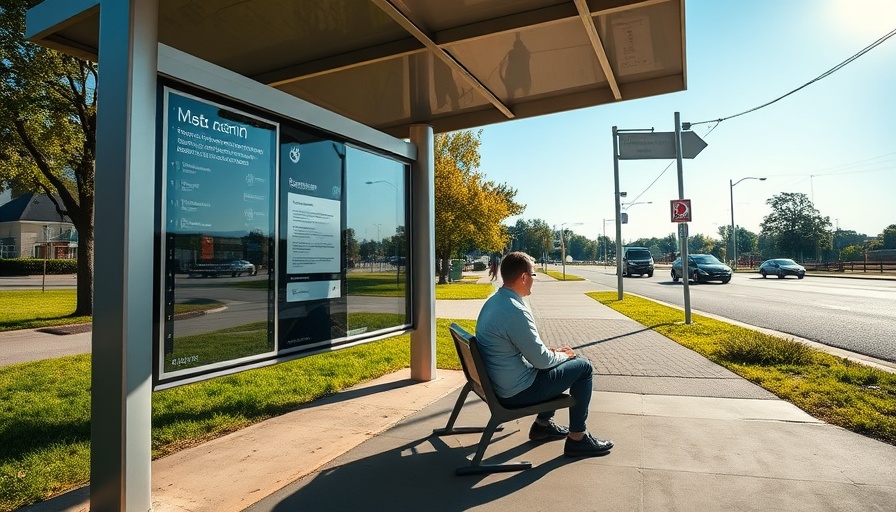
Houston's Innovative Approach to Combatting Heat at Bus Stops
As Houston braves another sweltering summer, the city's public transit provider, METRO, is taking significant strides to ensure rider comfort. Following a critical investigation by Houston Public Media highlighting the dangerously high temperatures at bus stops, METRO has launched a pilot program aimed at transforming bus shelters in the region. This new initiative employs perforated shelter panels designed to enhance airflow, providing much-needed relief for public transportation users.
Understanding the Motivation Behind the Initiative
The decision to undertake this pilot program was significantly influenced by the Houston Public Media report, “Hot Stops,” which shed light on the often unbearable conditions riders face during the scorching summer months. The report used real-world data to establish the need for intervention, showing that high shelter temperatures can significantly impact rider experience and health.
“We were aware of various studies that have been conducted regarding heat inside the shelters,” said Kenneth Brown, METRO's director of service enhancements. “So, we wanted to address this quickly.” His commitment to finding quick solutions reflects a proactive mindset in urban transportation planning, particularly important for vulnerable communities in high-temperature areas.
How the New Bus Shelters Work
The pilot program commenced with the renovation of six bus shelters in the Gulfton neighborhood, recognized for its severe heat during the summer. Each shelter is now equipped with perforated panels that replace the traditional translucent polycarbonate materials known for trapping heat. METRO's goal is clear: improve airflow and reduce temperatures, providing a more comfortable waiting environment for those dependent on public transportation.
Collecting Data and Evaluating Effectiveness
The new designs also come with temperature-monitoring equipment to gauge their effectiveness. Brown noted, “They are measuring heat inside the shelter,” ensuring that real-time data is collected to inform future enhancements. While initial reports suggest only a one-degree temperature difference between the new shelters and the old ones, comprehensive data collection over the six-month pilot period will ultimately determine the initiative's overall success.
Long-term Solutions and Community Impact
As METRO rolls out this pilot program, it is also exploring additional shelter concepts that may further enhance protection from extreme heat conditions. Notably, Harris County's Precinct 4 is investigating designs focused on maximizing shade, which could offer more long-term relief.
The community's response to these renovations has been positive, reflecting a growing acknowledgment of the need for public transportation solutions that not only serve functionality but also prioritize rider comfort and safety. Many local residents have expressed hope that these changes will make traveling through Houston in the summer months more bearable.
A Broader Perspective: Understanding the Significance of Public Transit Innovations
Improving bus shelters is part of a larger conversation about urban design and public health. As cities grow and climate change exacerbates temperature extremes, innovative approaches to public transport infrastructure will remain crucial. The enhancements witnessed in Houston may serve as a model for other cities grappling with similar heat-related challenges. Public infrastructure should not only accommodate users but also ensure their health and comfort.
As METRO pioneers these changes, the initiative encapsulates a broader commitment to improving quality of life through thoughtful urban planning. By investing in the community's public transportation infrastructure, METRO is illustrating the potential benefits of comprehensive, research-backed solutions to urban heat challenges.
Understanding these developments is vital for Greater Houston residents, as they have the power to influence the effectiveness and expansiveness of future public service initiatives. It’s a community effort to shape a more sustainable and livable city.
 Add Row
Add Row  Add
Add 



Write A Comment